Garden Glimpses: Spring 2025 – Better Late Than Never
It was a long time coming, but Spring finally got here. And by and large, it did not disappoint. True, some of the plantings were inexplicably reduced in size over last year, but many flourished, and new plantings in the west bed did very well. A climatic push-me/pull-you combination of short bursts of extreme heat and long spells of below-average temps contrived to bring things on quickly, then preserve them longer than normal.
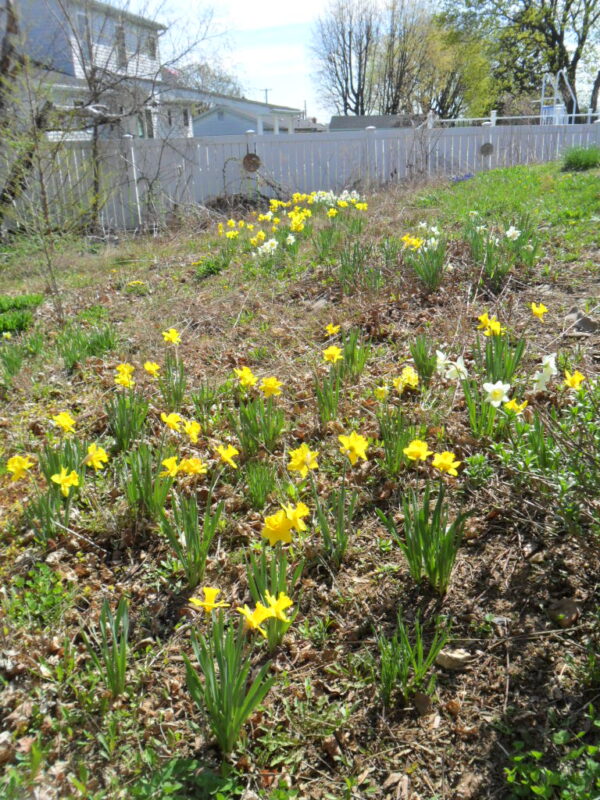
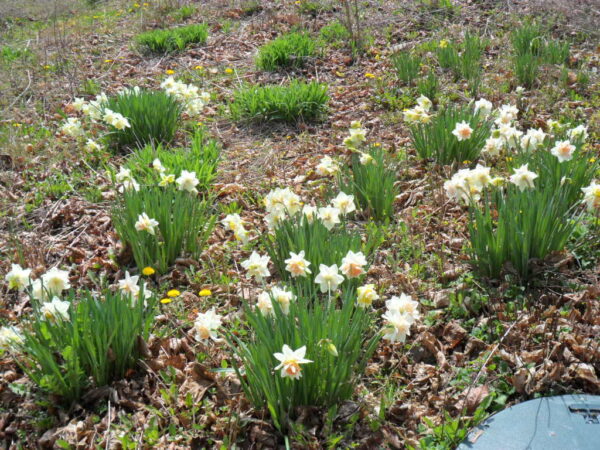
But as April wanes, the good times have ceased to roll; we’ve got two weeks of well above average heat in the works, and I expect to be largely bloomed out here by Beltane. So here’s one final look at what turned out to be one of the lovelier springs I’ve had here thus far.
I’ve been waiting since 2020 for my winter aconite to settle in and do its thing. Supposedly an avid spreader, mine had just kind of sat there for years; in fact, the patch I placed on the top of the sandmound had dwindled to virtually nil. The patch by the base of the path returned faithfully every year, sending up its buttercup-bright blossoms with minor increase each season, but failing to “wow” to any great extent. But last year, after the blooms had faded, leaving just the unique whorls of ferny foliage, I noted an abundance of much smaller leaves, spreading out from around the base of each previously isolated bulb. I didn’t want to get my hopes too high, but those sure looked like seedlings! Could this be the start of the long-awaited superspreader?
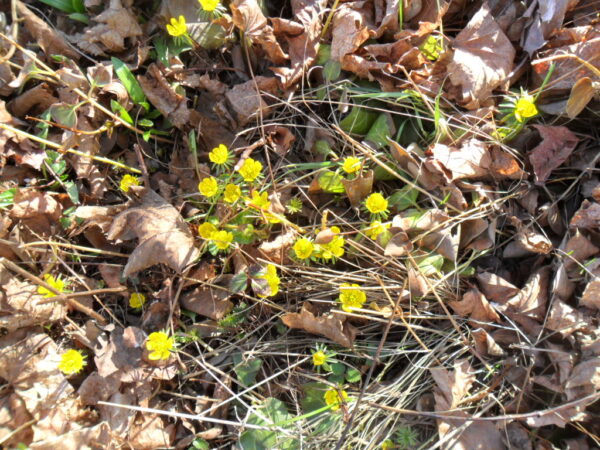
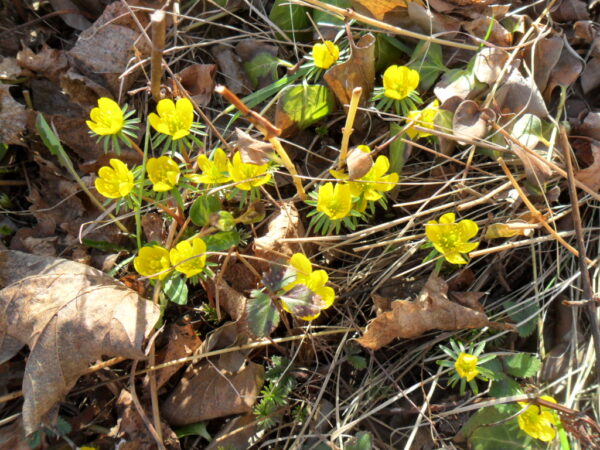
It was indeed! The aconite patch has now become, well, a patch! Not just a sundered collective of individual aconites, but a full-fledged space-filler! I’m fortunate that the seedlings bloomed in their second year – some plant offspring can take up to a decade to reach that kind of maturity. I’m not sure I could have held my breath in anticipation that long! As I look now at the splashes of gold peppering the path’s edge, the agony of waiting those five long years just melts away.
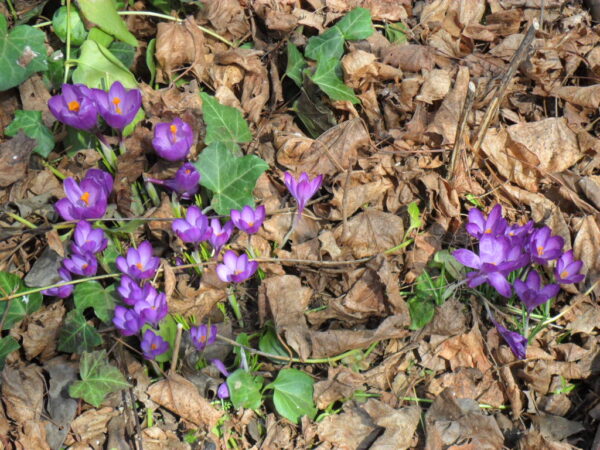
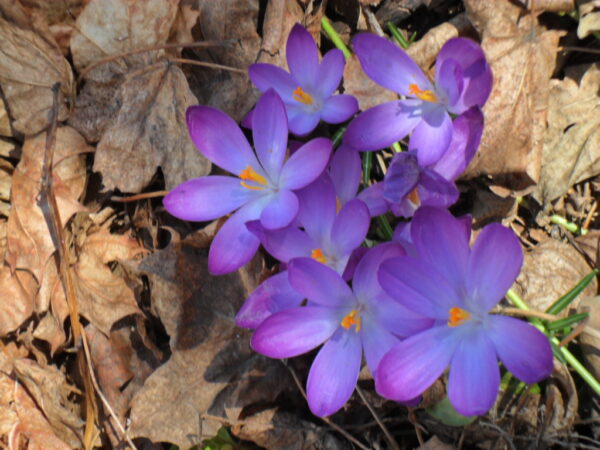
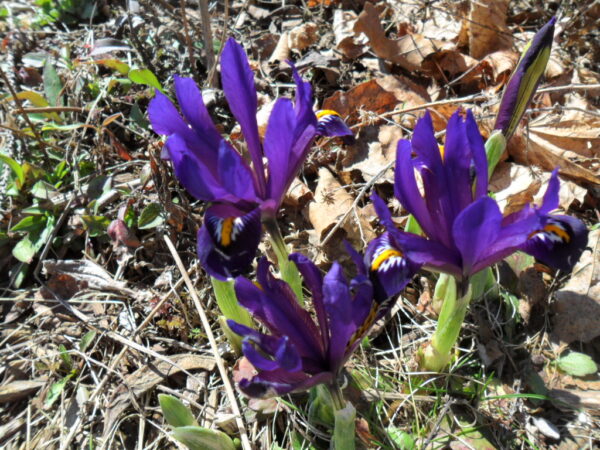
The crocus output this year was a mixed bag, at best. Two well-established, very reliable patches seriously underperformed, and some of the newbies in the west bed did, too, but the rest increased markedly over last year’s offerings. So on the whole I’d say it was a good year.
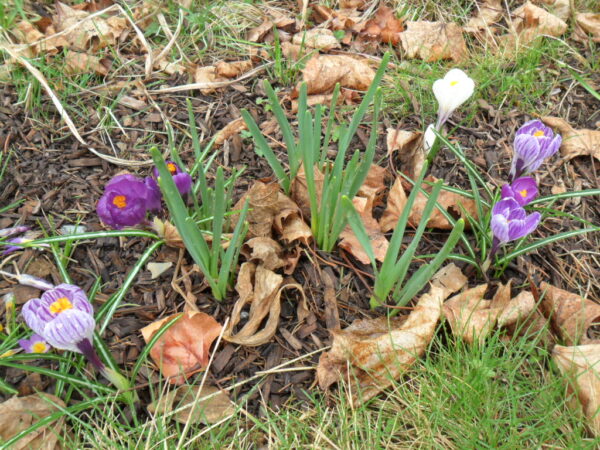
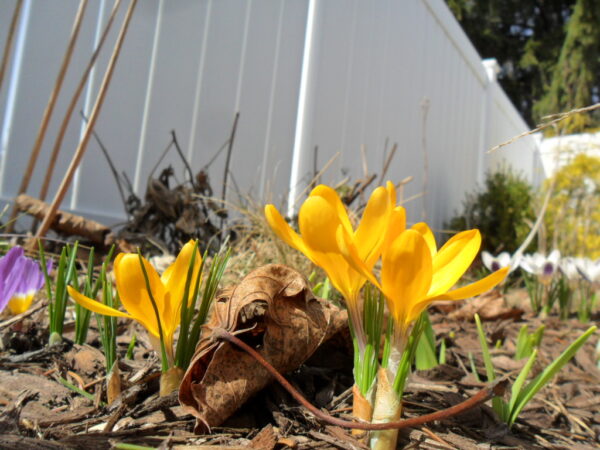
The new plantings in the west bed have been a labor of love. For some reason, I’d failed to account for early spring color in that sector when I laid out the original garden, but in 2024 we made up for that with a vengeance, widening the middle of the beds on both sides of the path to accommodate more bulbs. First up, digging in the potted bulbs I’d acquired that spring, and then, a new order of bare bulbs placed for fall planting. While I had good response from all the bulbs as far as sprouting goes, the so-called Giant crocus mix was very disappointing in its production. The blooms were oversold as “giant,” to say the least, and I got at best two flowers from each bulb. However, all good things come to those who wait, and the plants do look very healthy.
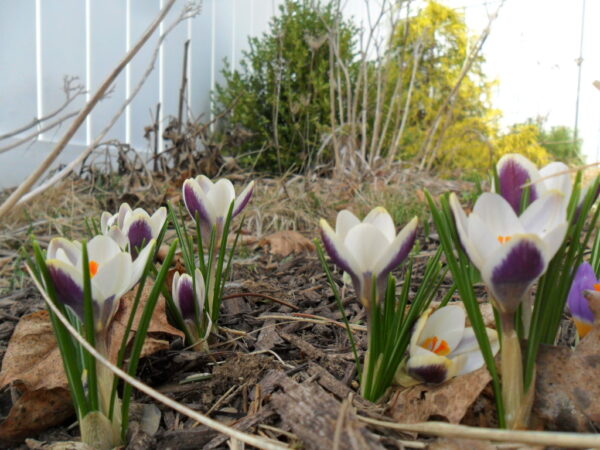
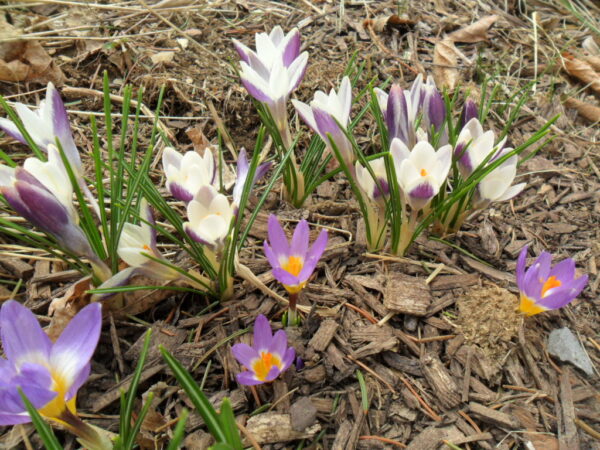
I had better luck with the smaller crocus varieties; both Panda (white with purple-black outside petals) and Sieberi Tricolor (medium purple with yellow centers trimmed in white) put on a good show, and as the earliest bulbs to bloom in that section, that was important. By the time the Giant crocus phoned it in, there were other things abloom, and their lacks didn’t seem as obvious.
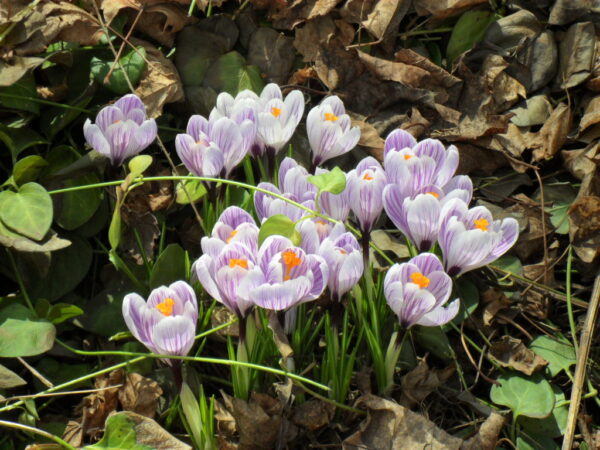
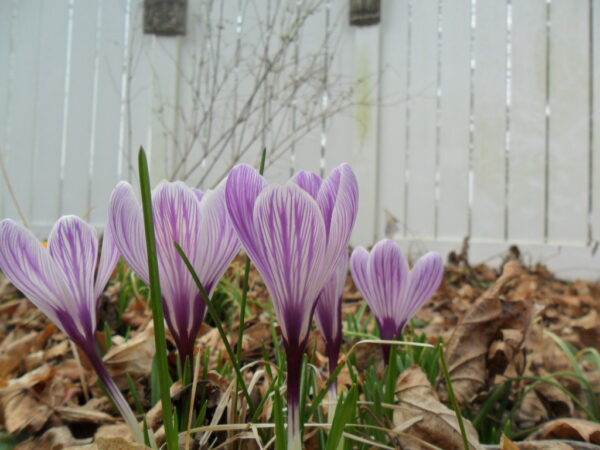
Most of the additional early performers here were mini tete a tete daffodils, for which I have a fondness. I buy at least half a dozen pots of these every year for indoor enjoyment, and then plant them out after bloom, so that the entire garden is dotted with their bright yellow cheer. Those I put in the west bed did remarkably well, and I can see portions of them from the back door stoop and the kitchen sink window, without venturing too deep into the garden on a frosty spring morning.
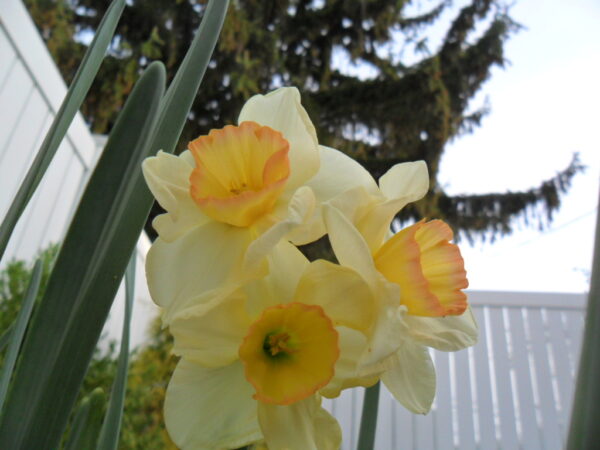
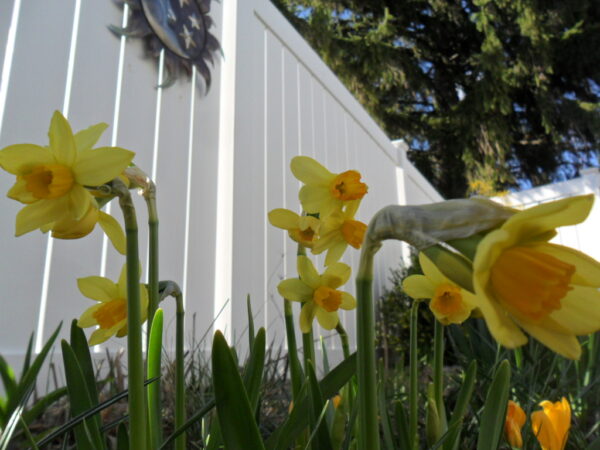
The remaining plantings in the west were standard-size daffodils, some purchased potted, others as bare bulb. I love all types of narcissus, but the typical large-flowered, one-bloom-to-a-stem varieties can get a bit monotonous, albeit they come in a wide range of colors and styles. What does strike my fancy are the types which sport multiple blooms per stem, and these are what I focus on now when making new orders. The two I chose for this area both did remarkably well, with anywhere from 3-5 mini blooms on each slender stem. Narcissus Yazz, with its creamy petals surrounding a short trumpet cup in pastel peach with deeper touches on its ruffled rim and at the base, is one of the loveliest color combinations in the collection: subtle yet provocative. Narcissus Spring Sunshine is aptly named, with intense yellow-orange extruded trumpets flanked by reticulated pastel yellow-white petals, an image of springtime exuberance if ever there was one!
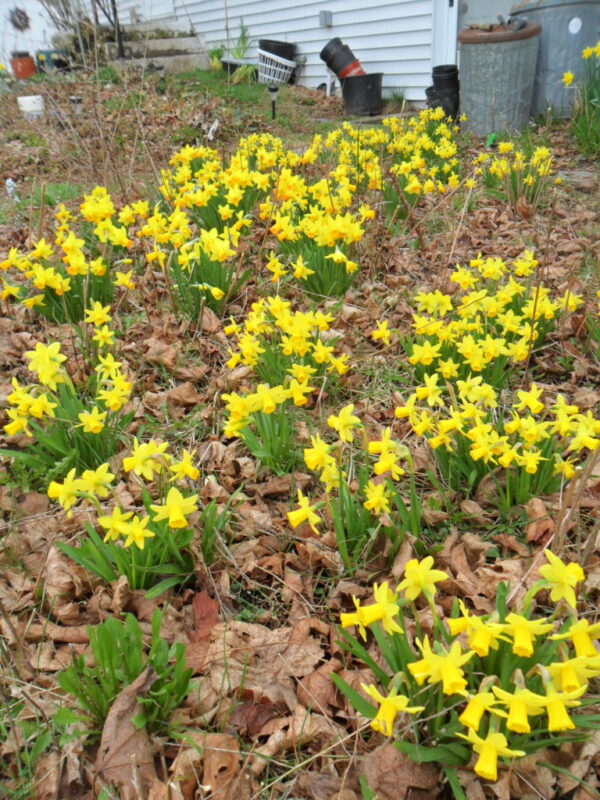
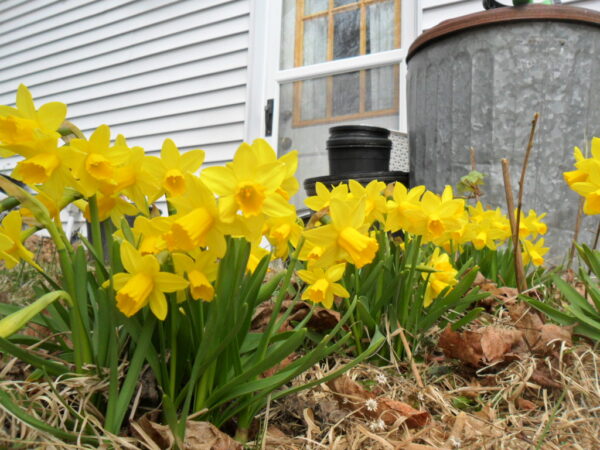
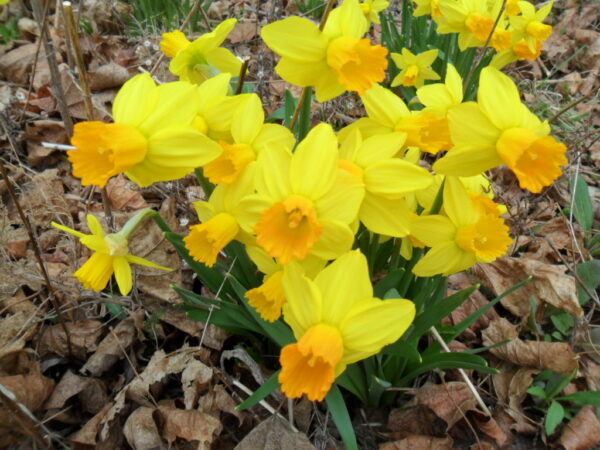
The majority of the daffodils were planted in waves, in the falls of 2019, 2020 and 2021, and now are well established. As a general class, narcissus have a long bloom season, with early-, mid- and late-season species, so if you make the right choices, you can have one variety or another in continuous bloom from late February through mid-May. Some struggle in their locations, and by right, ought to be moved (an arduous task I’m not really feeling up to at present), as a different setting could give them a new lease on life. But those that are happy where they are have done quite well, increasing yearly, to the point where now I don’t feel the least bit guilty cutting some for bouquets.
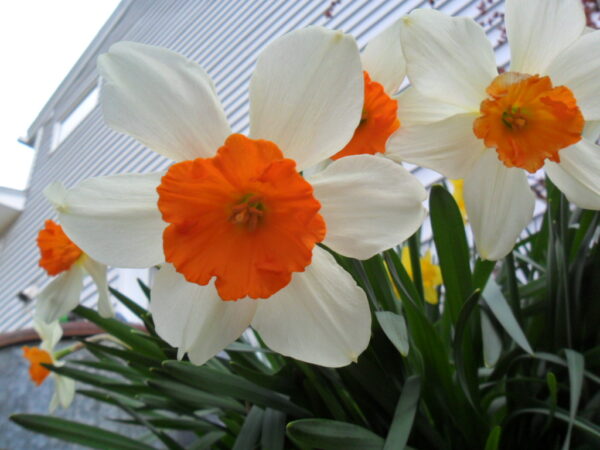
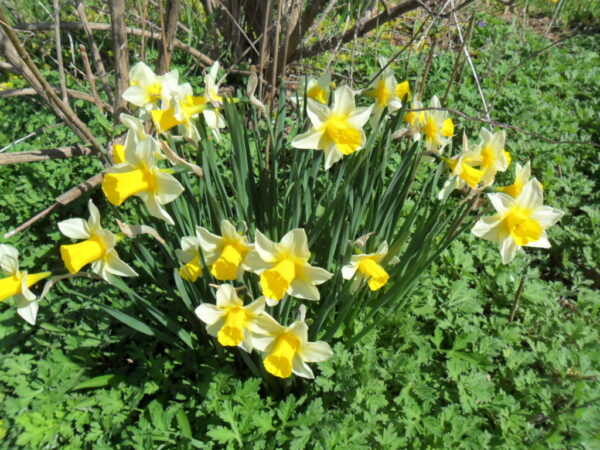
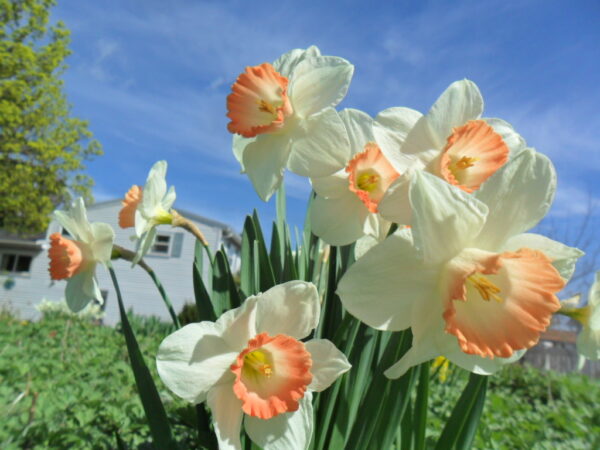
It’s such a luxury to step out into the garden with secateurs in hand and return with handfuls of fresh flowers for the table. Once the daffs got rolling, in their midseason form, I’ve been able to cut enough for continual display in five or six vases at once, refreshing with new blooms as the old ones fade, for weeks on end, all without denuding the garden. I’ve cut upwards of a hundred this spring, and their absence from the landscape is barely noticeable.
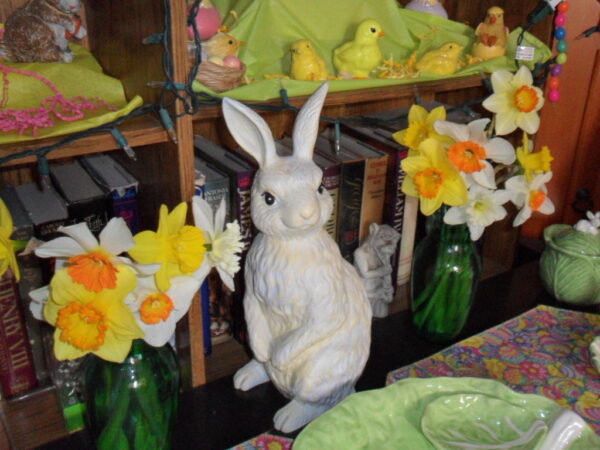
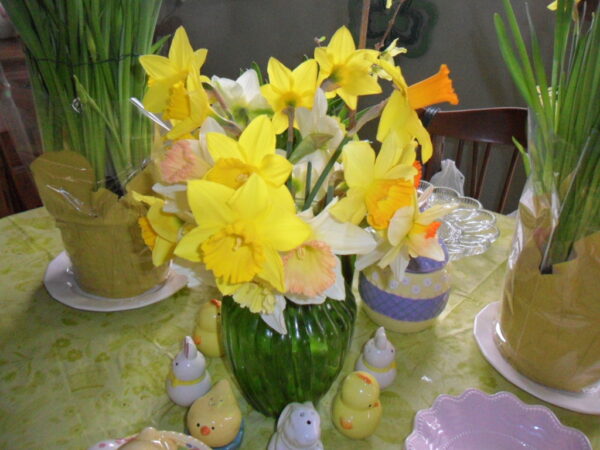
Narcissus, by and large, tend to bloom somewhat by color. The vast majority of classic yellow daffodils are early bloomers, followed by solid white standard forms, and then a bit of mix-and-match, with contrasting colors in cup and frill, such as orange and yellow or yellow and white, which dominate the mid-season. Most of the daffs in peach, pink, apricot, or salmon tones tend to come in later, along with a second round of whites.

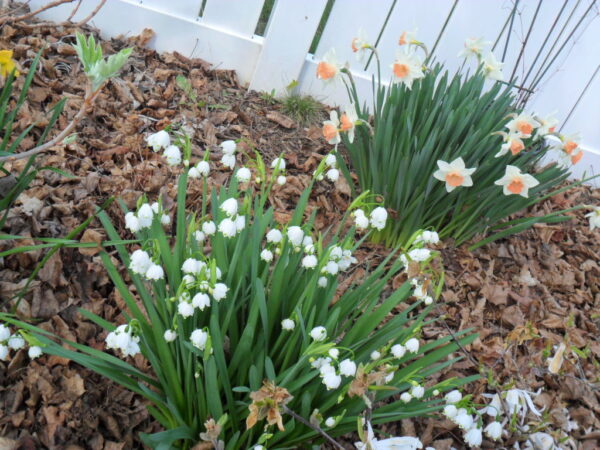
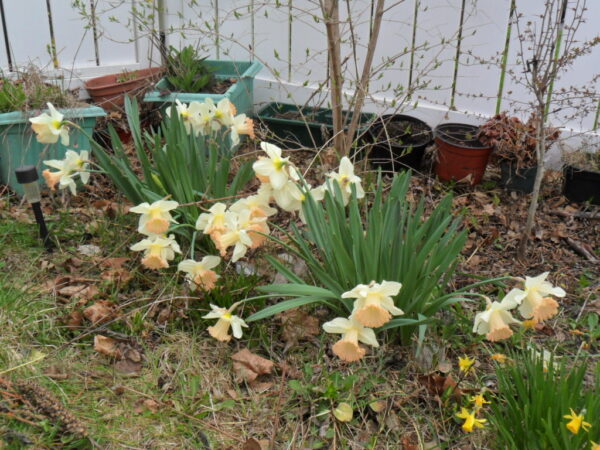
I like the purity of unadorned bright white, and in that category one of my favorites is Thalia, which has the further advantage of unique structure in its form. I have made room for half a dozen separate clumps of these, and all did extremely well this year, bursting with bloom. Thalia offers 2-3 blossoms per stem, and its flowers are large by multi-bloom standards, which tend to be more elfin, even when borne aloft on tall stems. The cup is ramrod straight, but notched at the rim, and the wavy-edged, lanceolate petals are graceful and spear-shaped, bulging in the middle and coming to a sharp point at the tips.
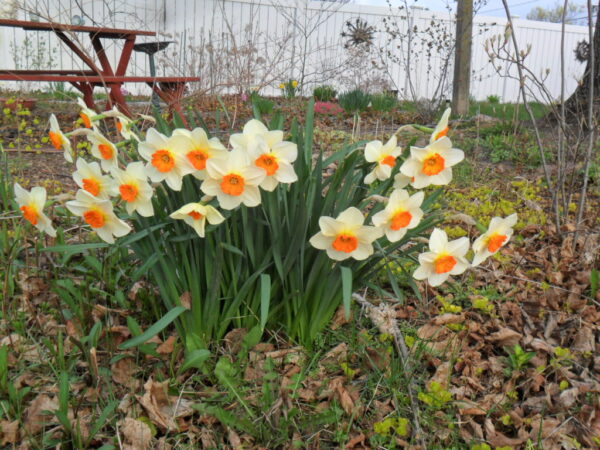
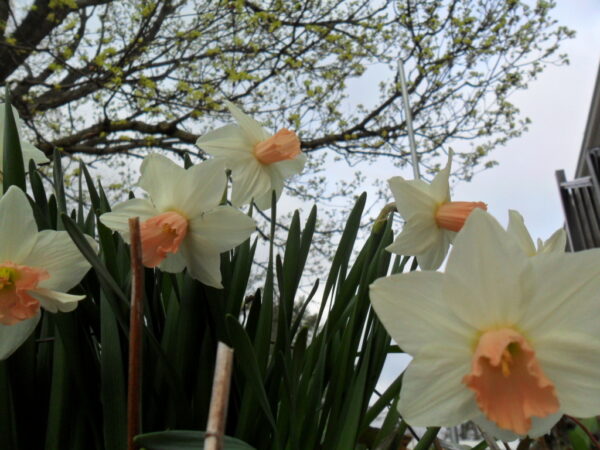
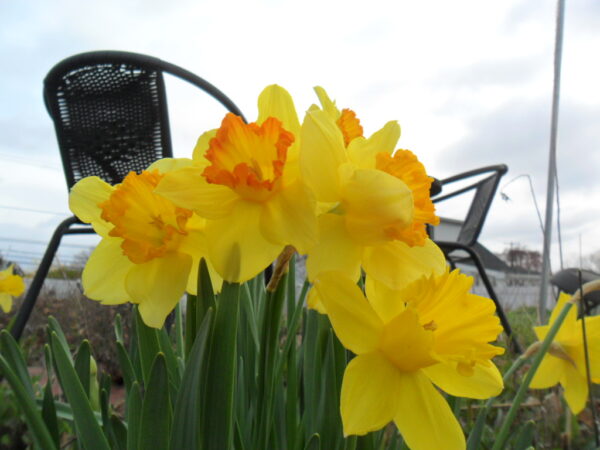
Scilla, or squill, are a small bulb that offers early bloom: pound per pound, they provide more springtime cheer than anything else going. There are a wide range of scilla available, in shades of white and blue, but my all-time favorite is Mischtschenkoana. Yep, it’s a tongue-twister, all right, but well worth remembering. These bright white lovelies, veined in palest blue, are excellent performers, exquisitely bright in the late winter landscape, often in full bloom here by March. They grow short to the ground, but bloom prolifically, and the flowers last for weeks, if the temps remain cool. I found these, quite by accident, in my first year of planting, while browsing a bulb catalog, and enjoy them so much that I add more to almost every bulb order I make, so that now they pop up all over the garden.
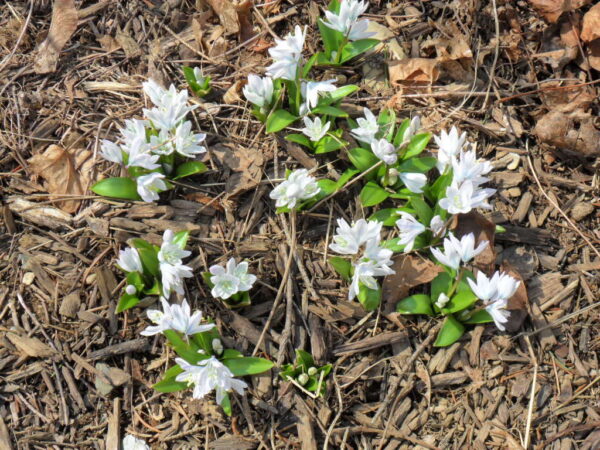
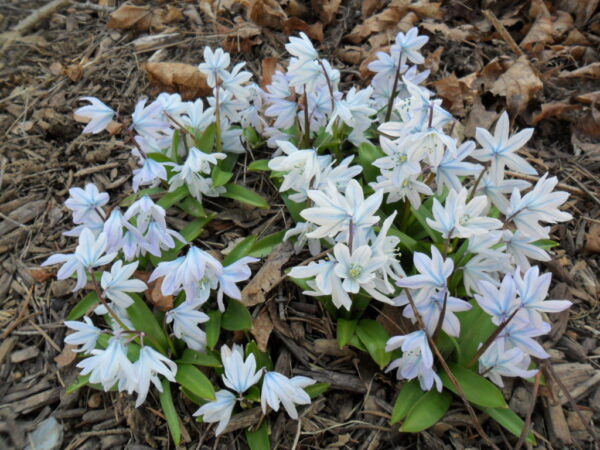
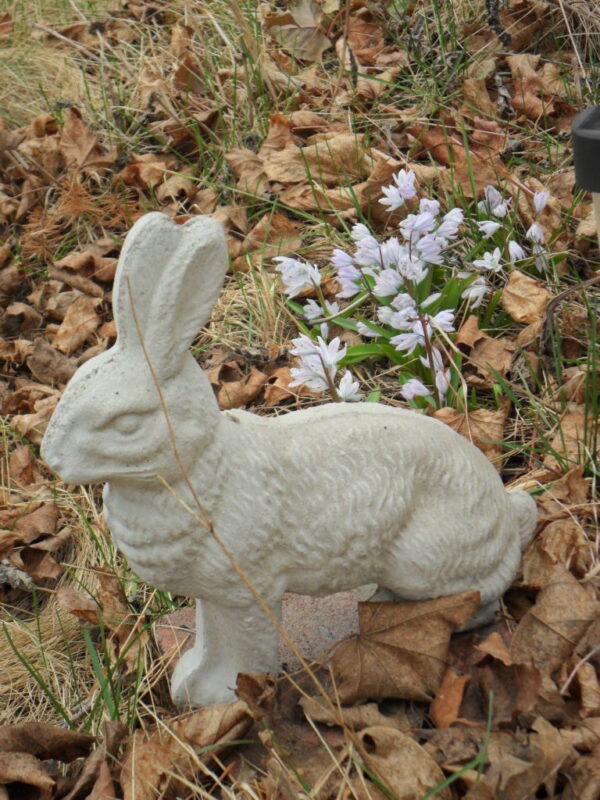
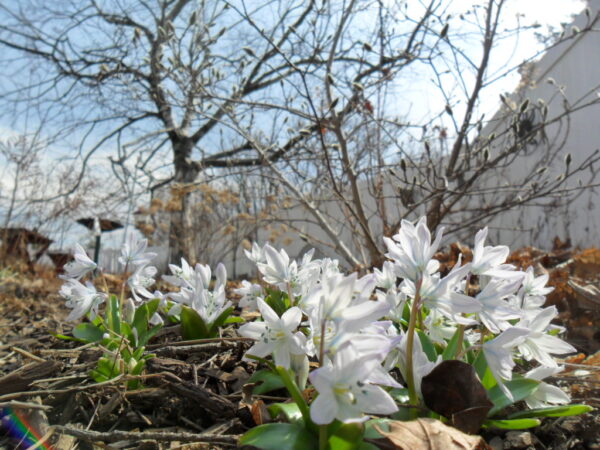
Hyacinths are another springtime staple, generally blooming mid-season, and adding welcome contrast to the fire-tone narcissus that dominate at this time. I still have some of the original foundation plantings in classic deep blue, heirlooms from my parents that yet thrive after sixty years. But my own tastes run to the more exotic, and the varieties I have purchased to supplement these tend toward pink, rose, magenta, lavender and burgundy shades. There’s also a sprinkling of white, and a pastel yellow which I prize highly, being reminiscent of some my grandmother grew in her garden when I was a child.
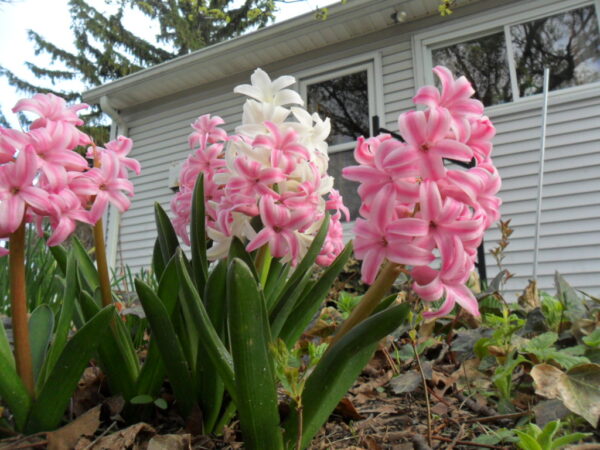
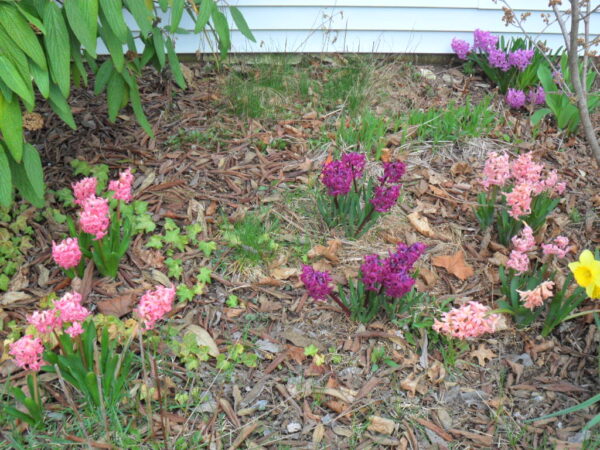
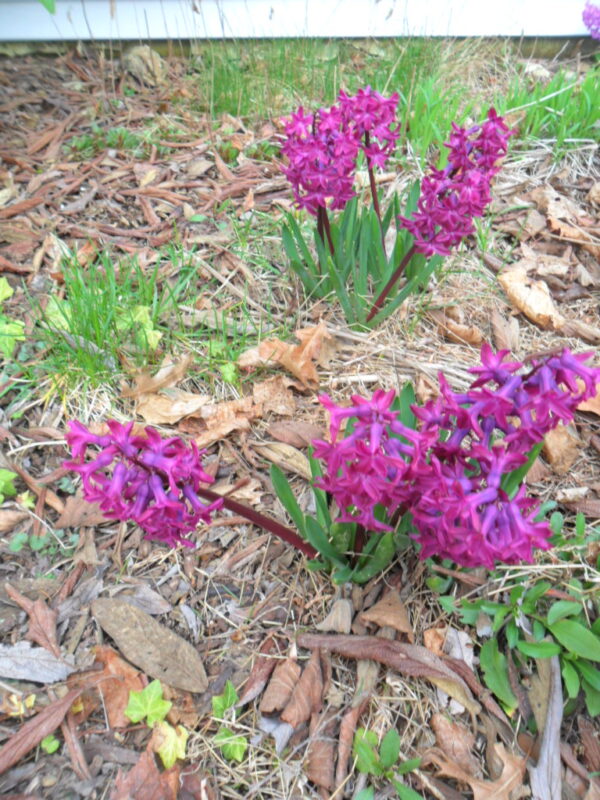
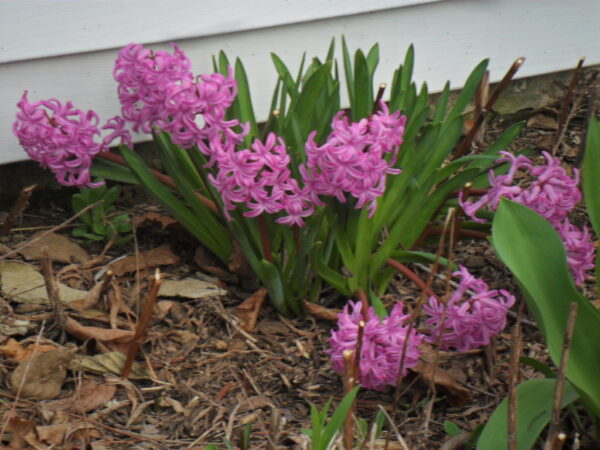
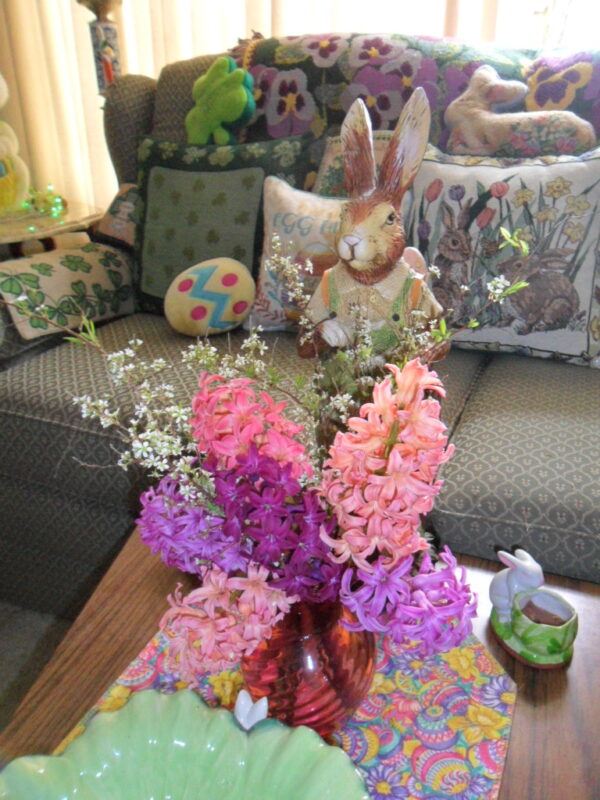
As a group, my hyacinths tend to struggle somewhat, with individual blooms that have dwindled in size over the years. Still lovely, but lacking the drama of the larger flowers they produced in their first years. Likely they need more attention to feeding than I generally offer, but I’ve acquired some bulb booster fertilizer, and am determined to do my Johnny Appleseed act, scattering granular fertilizer at the base of the plants after the bloom season is done.

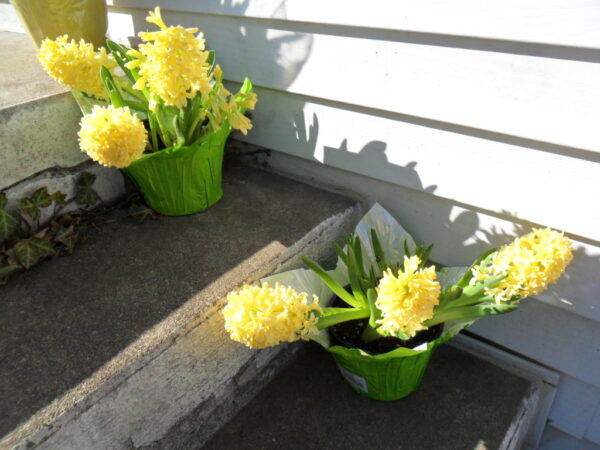
Related to hyacinths, by appearance and common usage, if not by genus, are the diminutive muscari, AKA “grape hyacinths.” These are likely familiar to most readers as “bluebells,” those ubiquitous azure pop-ups that adorn the April garden. But muscari come in many more colors than blue, and as with hyacinths, I gravitate toward the exotic. So I have “bluebells” in deep blue, pale blue, white, and a tricolor version mixing all three. Pink and yellow varieties are also available, and I have tried both, but without much success.
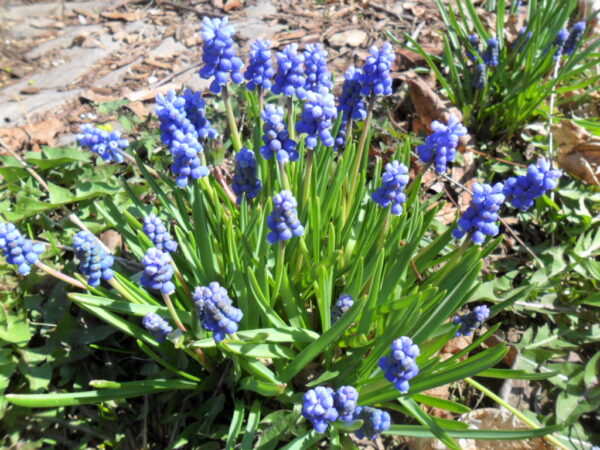
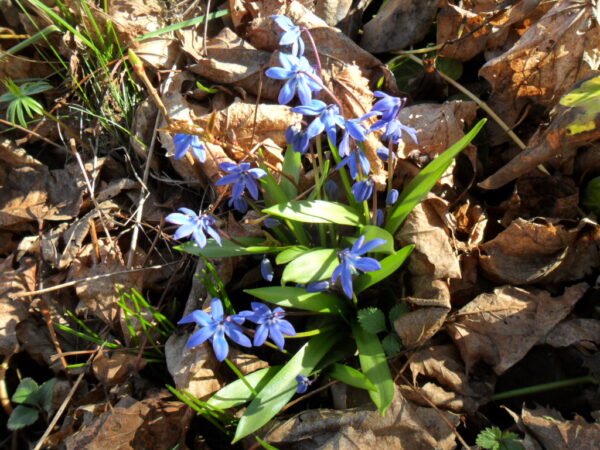
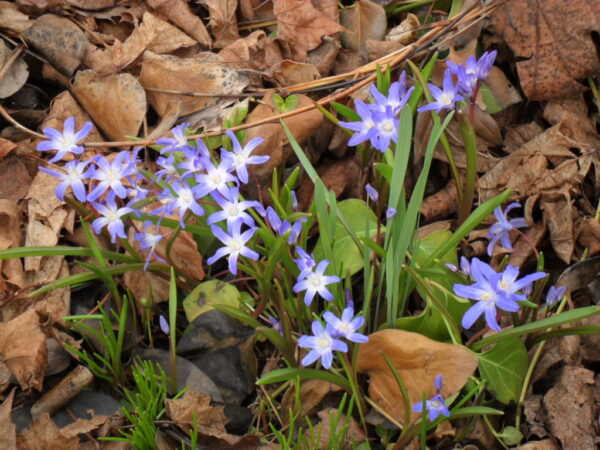
Over the years, I’ve had planting assistance from landscape workers and master gardeners, and their approaches to bulb planting have been distinct. The landscapers, under my instructions, followed the planting guidelines of the growers, and separated individual bulbs by the recommended spacing. This initially yields disparate dots of blooms in the bed, which fill in over time to create a denser patch. The master gardener, on the other hand, prefers “ready-made” clumps of bloom, and plants bulbs in clusters. The result here is instant gratification with a mature-looking stand from the get-go, but further expansion is somewhat limited by the bulbs’ proximity.
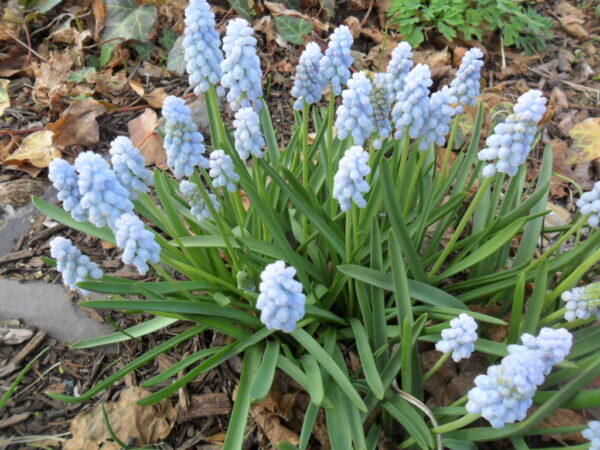
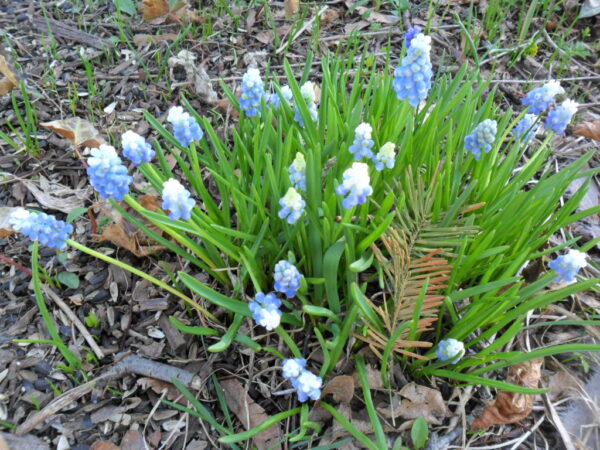
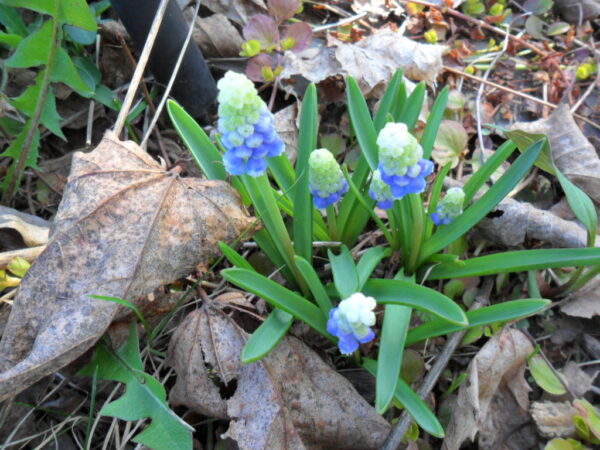
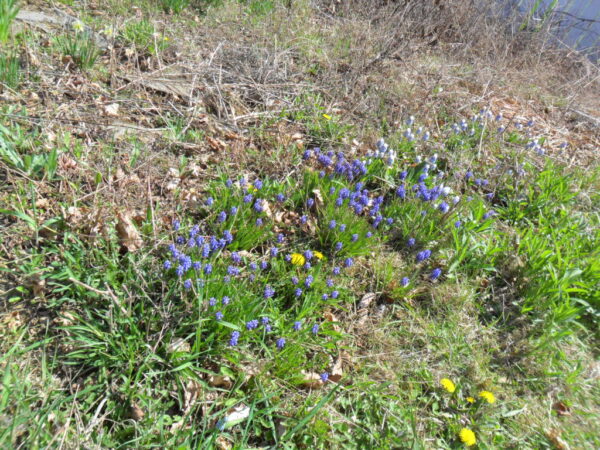
My muscari were planted in successive seasons, utilizing both methods, and I have to say that those planted to the grower’s instructions, now that they’ve matured, put on a much more impressive show than the clumps, and cover a lot more ground. Their blooms seem a bit larger to me also, perhaps a result of overcrowding in the clumps. So much for “expertise.”
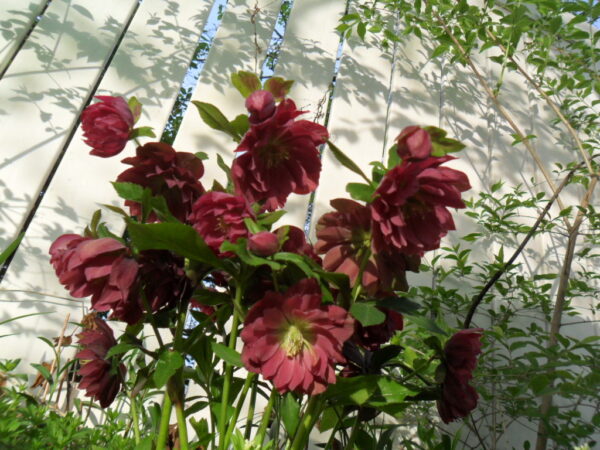
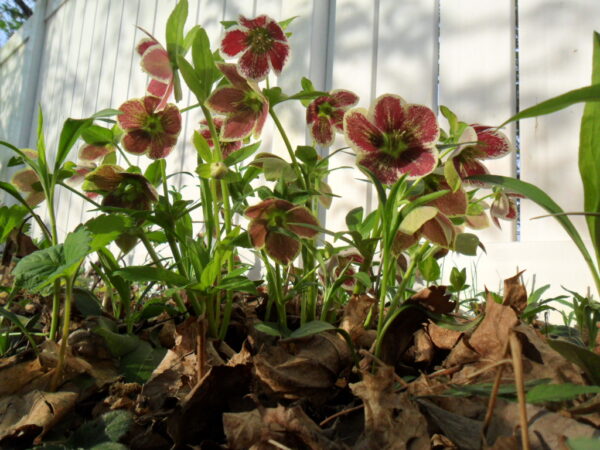
So far, we’ve only looked at bulb plants, which, to be fair, do dominate the early spring garden. But there are other offerings available, including flowering shrubs, trees, and even some herbaceous species available, like corydalis and hellebores. These are so “fleshy” and vigorous, with summery foliage, that they seem alien in the late winter and early spring landscape where they thrive.
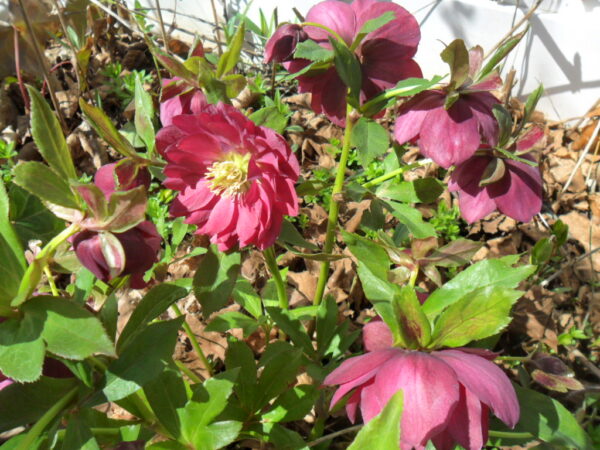
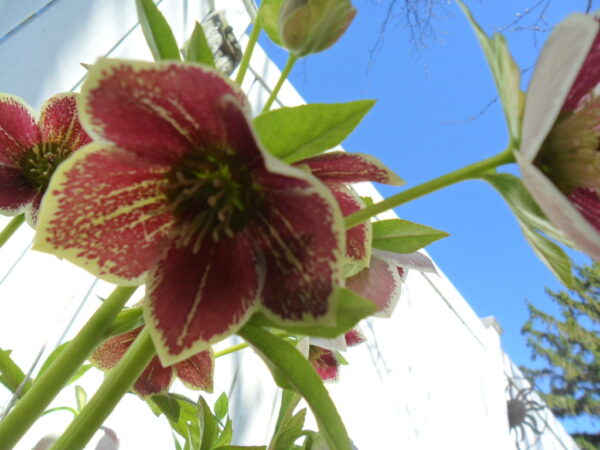
Hellebores, of course, are noted as among the earliest bloomers, often bursting with color by late January or early February, depending on location. Their common name of “Lenten rose” is an acknowledgement that these typically come to flower by Ash Wednesday, alluding also to their bushy, multi-petaled blossoms, similar to a floribunda or rambling rose. Thanks to extensive breeding efforts, hellebores now come in a dizzying variety of colors and patterns, from white, yellow, green, pink, burgundy, and purple to almost-black; in solid, dotted, speckled, striped and banded forms.
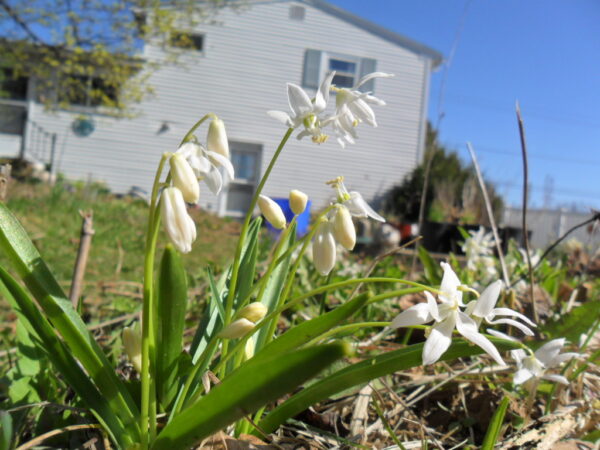
I was lucky to acquire five of these in the last year that my local perennial farm was in operation, but sadly, hellebores can have transplant issues, and one of these died in its first year here, while another has been struggling, and has now essentially given up the ghost. The three which reman, however, are now well-established and thriving, with bountiful floral displays that increase year to year.
Corydalis is another excellent performer that flies under the radar of most gardeners. I was very familiar with the yellow-blooming variety, which comes to flower in late May and continues throughout the growing season, but I had no awareness whatever of the early spring bloomers.
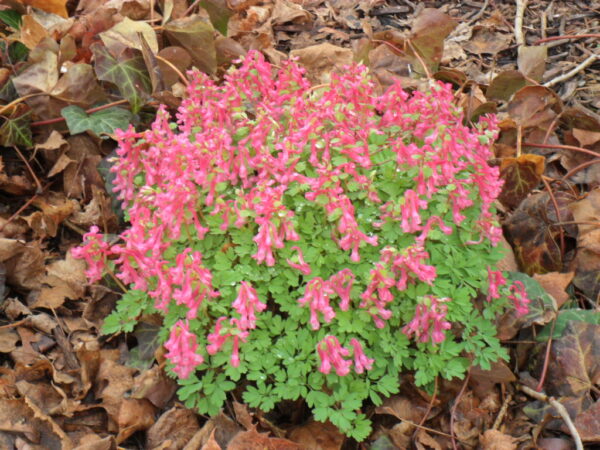
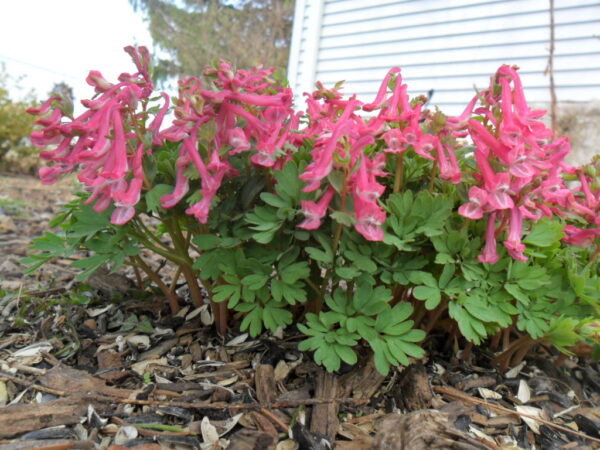
Corydalis Beth Evans is my favorite, with clusters of coral, bugle-shaped blossoms on perfectly round mounds of ferny foliage. These are often up and doing by late February, vying with the typical crocus and snowdrops for attention. I was most impressed with these in their first year here, but I’ve seen more than my fair share of “one-season wonders,” which thrive initially only to wane over time, so I was reluctant to invest in more until they proved themselves.
Which they have done, in spades! After three more springs of reliable performance, last year I ordered several more, and decided to also try corydalis Purple Bird, a purple-blooming variety (as you might expect from its name). The new Beth Evans have hit the ground running, but Purple Bird seems reluctant to leave the nest. One fizzled out almost as soon as it emerged, and the other, while healthy-looking, offered only a smattering of bloom. Hopefully it does better as it matures.
I don’t have a lot of spring-blooming hardwoods on the property. There’s an ancient forsythia in the front yard, and a star magnolia I acquired for the garden (as well as the witch hazel, of course, which is long past bloom now). Both had a bumper crop year, though not without some hiccups.
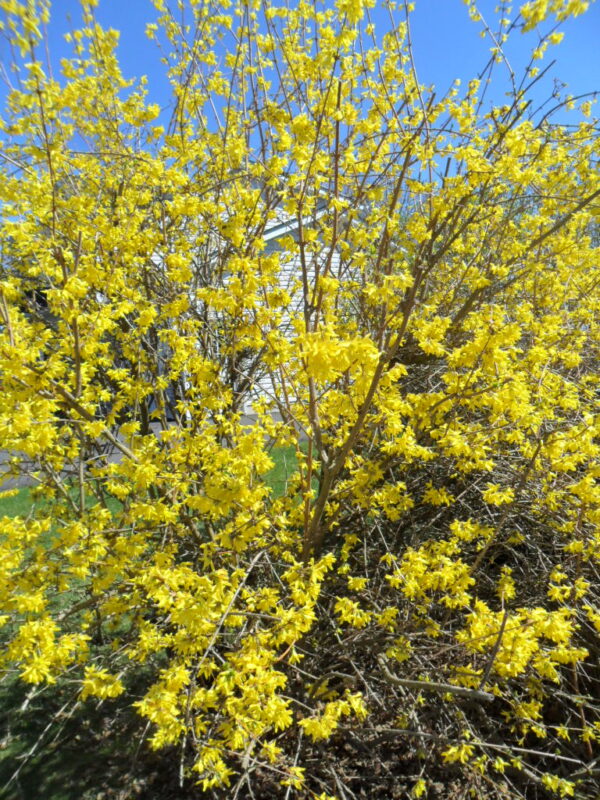
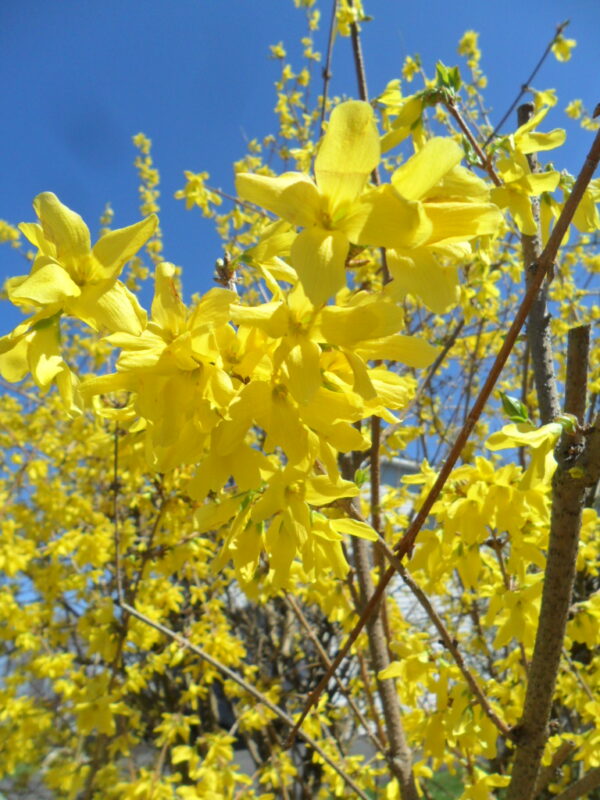
The forsythia was a blaze of yellow, and fuller of bloom than it has been for years. The fact that, hampered by my knee surgery recovery, I wasn’t getting out to cut branches for forcing indoors as early as I normally would, may help to account for the additional bloom later. But even so, flower production seemed up, although a late frost did cause some early blossoms to brown and wither.
The star magnolia had the same issue. Although hardy in this region, this early bloomer isn’t really well adapted to the cold. The buds, while still furled, are fairly cold-tolerant, but once the flowers open, they are very susceptible to frost and freeze, browning quickly and marring the overall effect. The star magnolia’s habit of blooming in late March means it often encounters adverse conditions, and the predominant feelings it evokes in gardeners are frustration and disappointment, as the tree’s promise fades to unfulfilled potential.
I had a bit of that myself this year, made all the more aggravating by the abundance of buds showing. In its five years here, this star has failed to take its bow, with sparse bloom the norm, but in 2025 it pulled out all the stops, completely covered in flowers. The first of these opened unimpeded, and then two nights of frost hit, and they browned abysmally. Fortunately, the frost was not a full-fledged freeze, and the many unopened buds survived to bloom again another day, but the overall effect was marred by their blackened brethren.
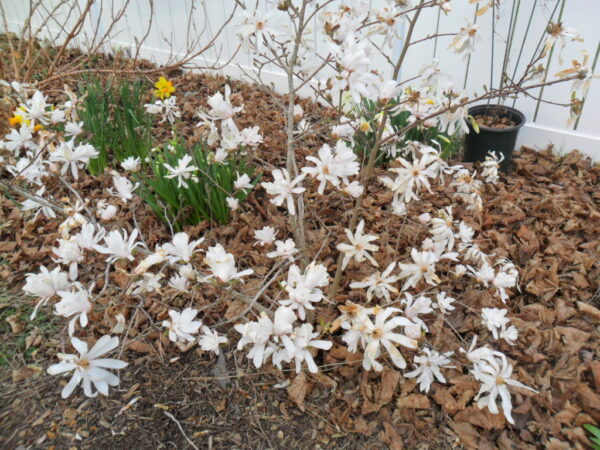
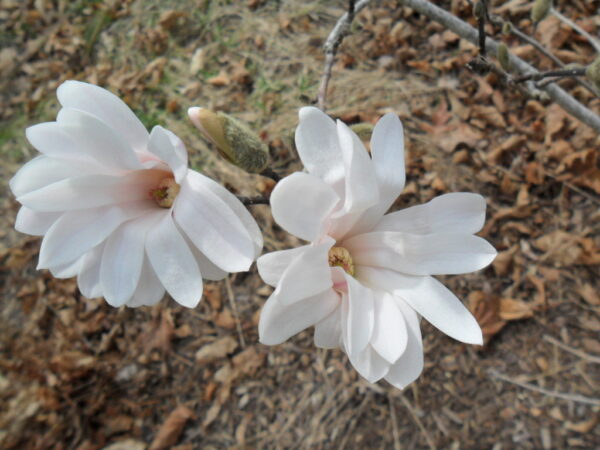
Deadheading a magnolia is a tricky process, and of course, impossible for larger specimens. Mine remains more shrublike in its habit, and thus fully accessible for deadheading, but to cut these spent blossoms is to risk the new shoots which emerge directly from their base. The best I could do was to wait for the browned flowers to decay sufficiently so that their petals could be gently pulled off by hand, a tedious task at best, but worth it to enhance the beauty of the blooms that remain.
They say justice delayed is justice denied, but for 2025, spring delayed meant spring enhanced, in many ways. Can’t wait to see what May has in store!
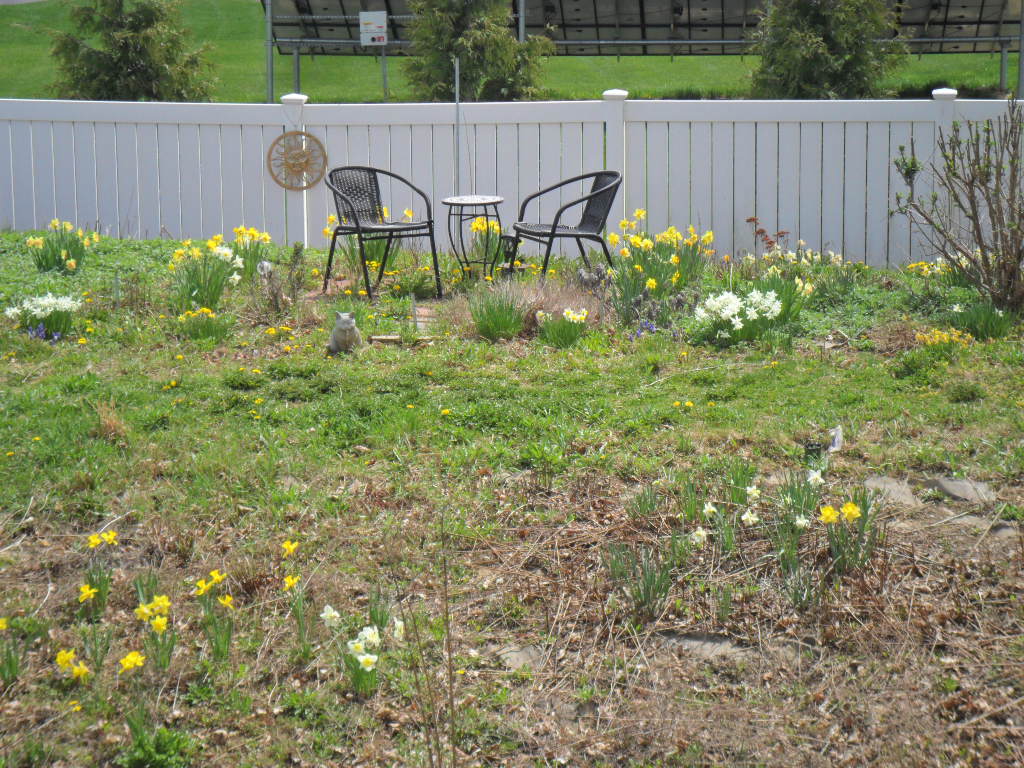

One comment, add yours.
Rosemary
Thank you Alex, I loved seeing your photos of daffodils, crocus, narcissus,
forsythia, all lovely spring flowers that I remember growing up with. My
mother planted purple crocus along the front sidewalk and forsythia bush
next to our front porch, along with red bud tree. Our yard looked so pretty
in the spring, in time for our Easter Egg hunt.